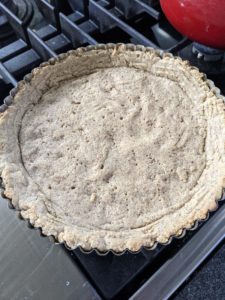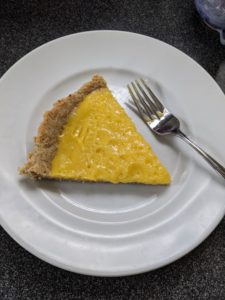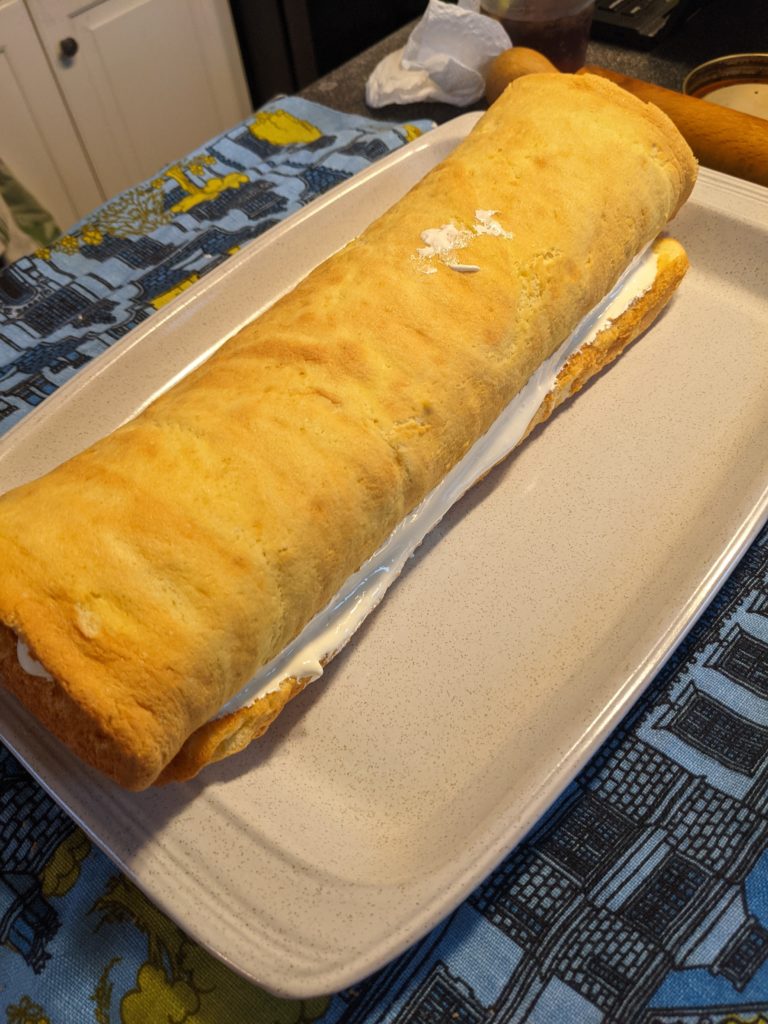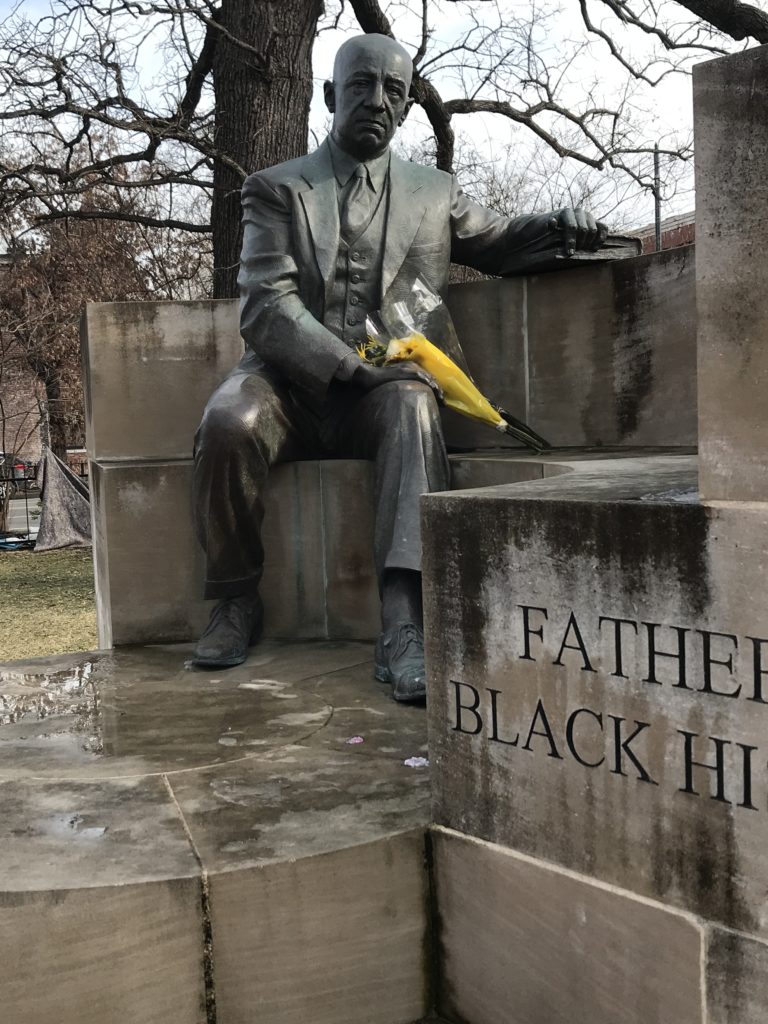
In The Great British Baking Show Masterclass, Mary Berry admits that she does not make her own puff pastry since it’s easier to buy it at the shops. Nevertheless, I lost my mind and decided that now would be a perfect time to make puff pastry from scratch. (I mean, now is a better time than, say, when I have a full time job!)
I used the instructions in The King Arthur Flour 200th Anniversary Cookbook, which have you mix a small amount of the flour into the butter instead of just whacking the butter flat with a rolling pin the way the contestants on GBBO do. The mixing process (I used a stand mixer; I may need to invest in one for myself when I return to my own kitchen) softens the butter enough to be able to spread it into a square.
Puff pastry isn’t really difficult to make. It takes time, and patience, definitely. And it requires having a decent workspace and rolling pin. Maybe arm strength–though I don’t have that. And it requires being able to accept knowing that your pastry has a full pound of butter in it.
Anyway. I made my dough, I made my butter, I chilled it all, and then the next morning I put it all together. Roll–fold–chill. After a bunch of times, I had a nice, layered bit of pastry.

I used half the pastry for salmon en croute. I didn’t do a fantastic job of rolling the pastry thin enough, so it was a bit doughy on the sides. Definitely not going to get a Paul Hollywood handshake on it, but it was delicious. Shabbat dinner, so no photos.
With the scraps of pastry from the salmon, I baked some snacks. Butter, flour, egg wash, and heat–can’t go wrong.

What will I do with the remaining half of the batch of puff pastry? Stay tuned to find out.







